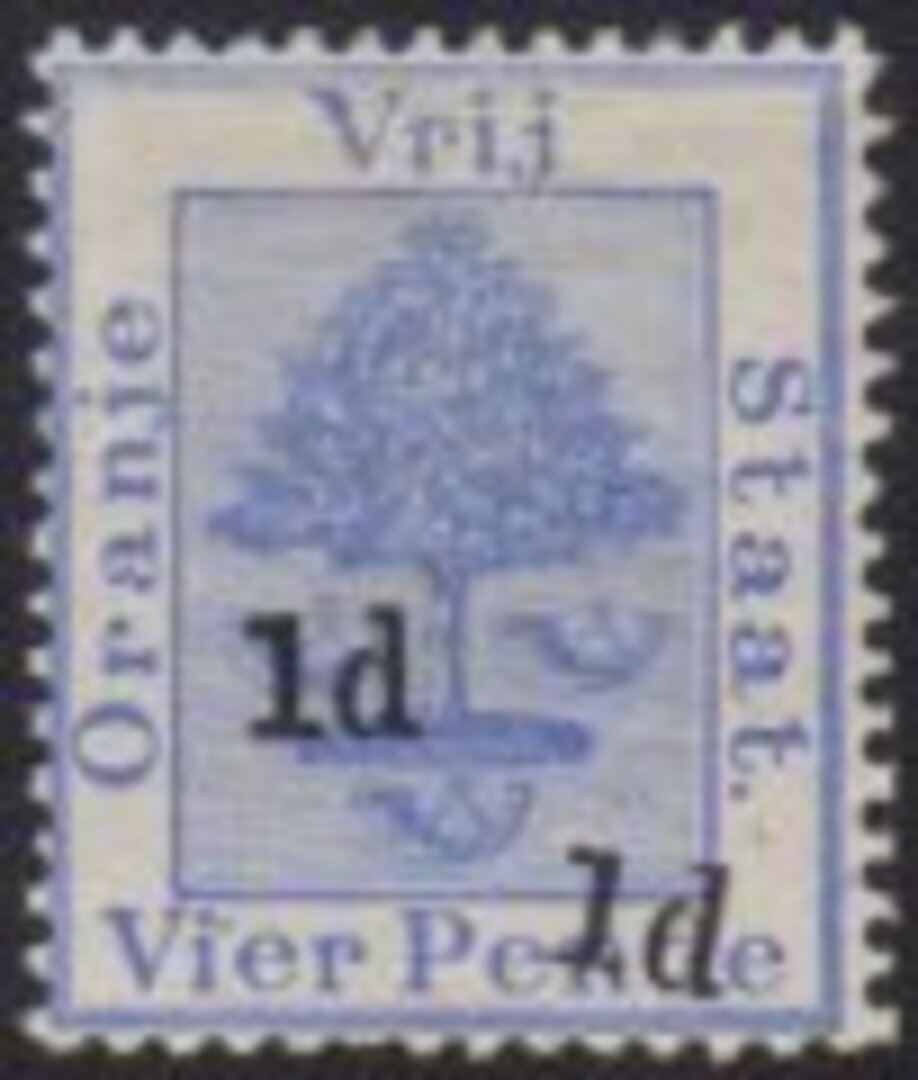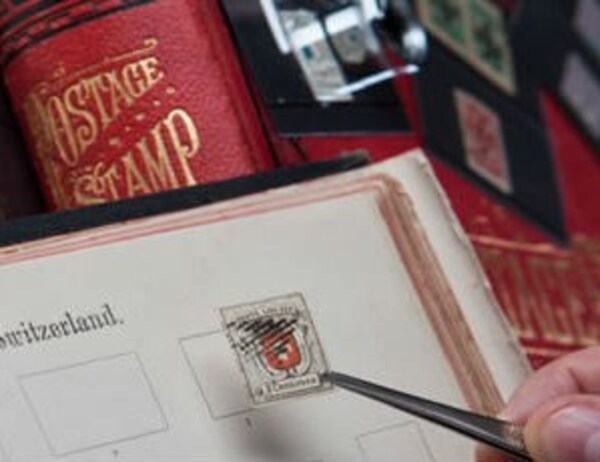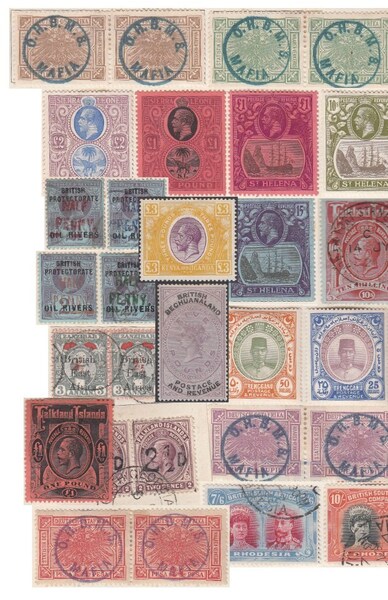The Stamps and Philatelic History of the Orange Free State between 1854 -1902, a brief overview.
Rarely can such a relatively small African Colonial Republic provide such a varied array of philatelic material. Yet, as we shall see, whilst Orange Free State stamp production was dominated for a period of nearly fifty years by only one iconic pictorial design, a large assortment of very collectible related items followed. These include unusual postmarks, provisional overprints with a myriad of varities & errors, surcharges and revenues. In addition, there are official Mounted Police Force and Telegraph stamps together with a fascinating postal history which can include, amongst much else, mail sent during the British Occupation of the OFS and the Boer War.
In the current sale we are privileged to be able to offer a wide selection from virtually all the categories described. The coming together of this exceptional medley of different philatelic topics was attributable to a series of specific and identifiable events. The postal history of the OFS was affected by war, political conflict, demographic movement, sudden economic growth and a postal infrastructure that was dependent for its supplies of stamps on Great Britain. Together, this confluence of events created what may be described as a “perfect philatelic storm” – all of which contribute to making philately such a fascinating, rewarding and addictive subject!
The second half of the 19th century witnessed many tumultuous events, none more so than the colonial exploration and development of Southern Africa. European development of the vast Cape Colony included the Orange Free State, a land locked area, bordering Natal, Transvaal and Basutoland that took its name from the Orange River, named in honour of the Dutch Royal Family and the House of Orange with its capital Bloemfontein. Since the first Dutch settlers arrived in the Cape area of Africa during the late 17th century there had been ongoing conflict with the British who were competing for resources and power. By 1854 the situation had become untenable and the British, whilst still maintaining a claim to the region were forced to retreat. On the 23rd February the Convention of Bloemfontein was signed, British rule ended and the Boer Republic of “Oranje Vrij Staat” was established. The Boers were largely of Dutch extraction but also included French Huguenots who had fled from religious persecution in Europe. The situation changed dramatically in 1869 with the discovery of diamonds an event that was quickly accompanied by an influx of prospectors who rushed to the OFS diamond fields. Their need for a better postal service was soon recognised. Since 1856, Revenue stamps embossed on different denomination coloured papers together with supplies of Cape of Good Hope stamps for use on mail sent to the Cape Colony and elsewhere were available. It wasn’t until the 1st January 1868 that the first OFS postage stamps were issued. The embossed Revenue stamps were replaced by printed ones in 1877 that were also used for postage.
The 1868 issue was printed by De La Rue in London and initially comprised three values, One Penny, Sixpence and One Shilling. This was later extended to eight denominations. The stamps all carry one prominent design. The central feature is an Orange Tree, below which are three symbolic bugle horns under tree branches heavily laden with fruit. A central vignette is surrounded by a frame in which are written the words ‘Oranje Vrij Saat’ with a value given at the bottom of each stamp, for example ‘Een Penny’, ‘Vyf Shilling’ or Zes Shilling. These stamps were for domestic use only. Other stamps were required for international mail issued by the country of embarkation. Many covers bore both OFS and Cape of Good Hope stamps tied with a Cape Town cancellation. These covers offer a very valuable insight into the development of the postal service. This situation lasted until 1st January 1881 when OFS postage stamps were recognised for all overseas mail.
The OFS was reliant upon supplies from London. Shortages occurred throughout the Empire and ships from England were often delayed. The OFS suffered more than most with consecutive delays throughout the 1880s. Local firms in Bloemfontein were used to overprint existing stocks, usually the higher denomination stamps being overprinted with a lower value. Results were mixed and there are many examples of defects including omissions and errors. Finding these is a rewarding part of the whole OFS philatelic experience and some undoubtedly still remain to be identified.
The clouds of unrest were gathering. Skirmishes between the Boers and the British culminated in the Boer War of 1899-1902. The net result was that the OFS was annexed to the British Crown and renamed the Orange River Colony on the 28th May 1900. Guerrilla war continued until the signing of the Peace Treaty of Vereenigng on the 31st of May 1902. In this intervening period Republic stamps were used with a V.R.I (Victoria Regina Imperatrix) overprint. Plans to issue a definitive issue with a portrait of Queen Victoria were abandoned following her death in January 1901. Further provisional issues followed with ‘Orange River Colony’ overprints appearing on both Republic and Cape of Good Hope stamps. One E.R.I overprint was used on a sixpenny stamp following the accession to the throne of Edward VII. Definitive issues followed in mid-1903.
Other OFS stamps include official Mounted Police Force stamps that were replaced during the Boer War with printed postage labels called “Commando Briefs”. A Telegraph Service was established in the OFS in 1880, with regular stamps overprinted with a distinctive ‘TF’ in black ink. Again many varieties of the overprint have been identified.
Many of these stamps were popular with collectors from the start, the conflicts in Southern Africa were closely followed with military leaders on both sides lauded in different parts of the west (your author was recently drinking at the “The Philharmonic” pub in Liverpool, the stained- glass effigies of British Boer War heroes are still there, staring at the revellers below…). The stamps and the mail bearing them which were so studied by collectors at the time still have the power to attract and fascinate.

 General
General
 General
General
 General
General